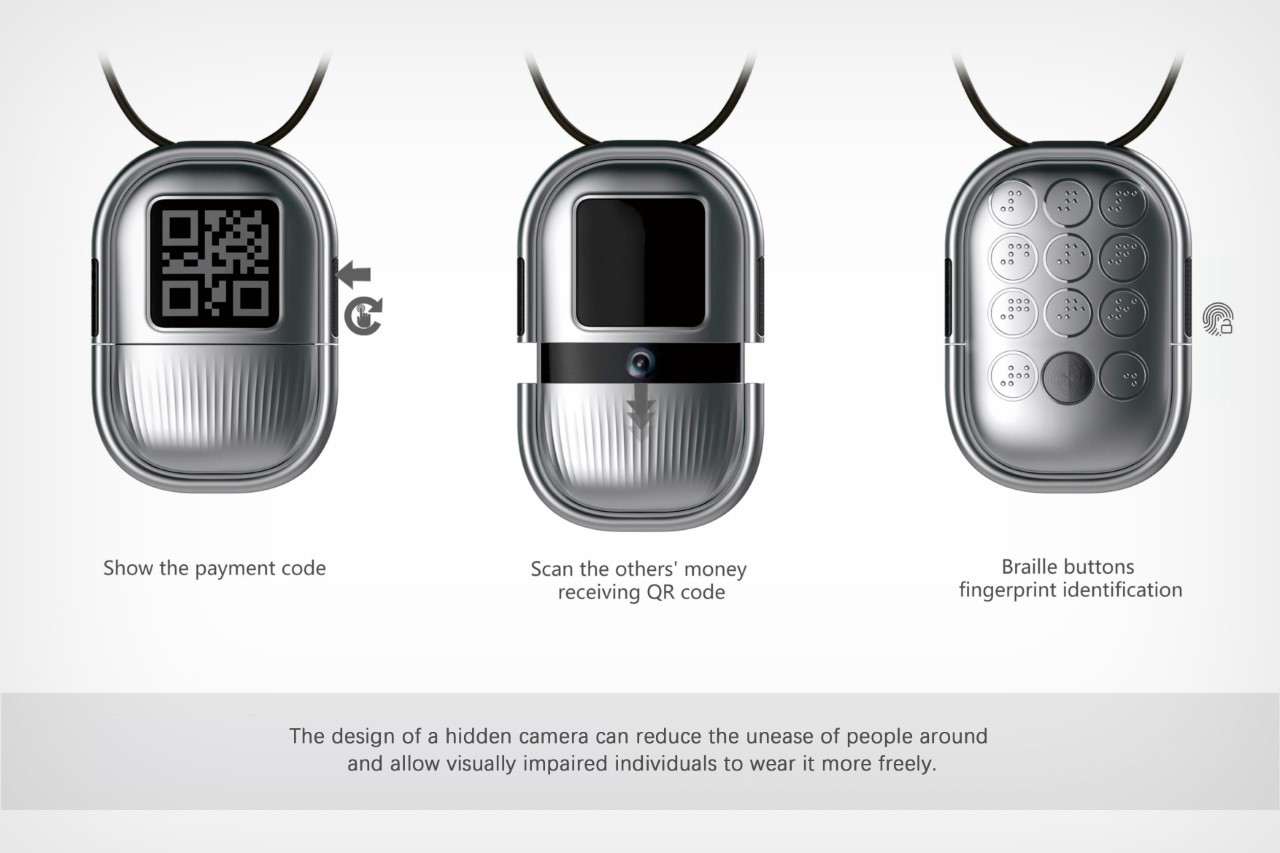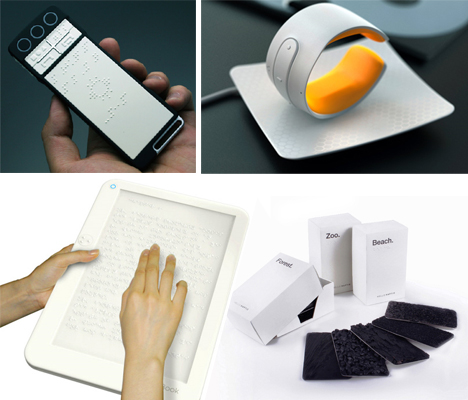Voice-Activated Assistive Devices: Empowering the Visually Impaired
Voice-Activated Assistive Devices: Empowering the Visually Impaired
Blog Article
Discover Innovative Devices Made for the Visually Impaired
The development of innovative devices for the visually damaged stands for a substantial development in access and independence. Technologies such as wise glasses with AI capabilities and mobile applications designed to provide auditory summaries are improving daily experiences for users. Furthermore, wearable gadgets that use haptic comments improve ecological understanding, while modern-day Braille technologies offer new means to engage with message. As these tools continue to progress, their influence on the lives of those with visual disabilities elevates crucial questions regarding the future of inclusivity and autonomy in different elements of life. What lies ahead in this technical landscape?
Smart Glasses for Navigating

Smart glasses developed for navigating are revolutionizing the way visually impaired individuals communicate with their environment. These innovative devices use a combination of cam technology, expert system, and acoustic responses to give real-time details concerning environments. By using obstacle detection systems, smart glasses can alert users to potential threats, enabling more secure wheelchair in both familiar and strange settings.
The assimilation of GPS technology further boosts navigating capabilities, permitting customers to receive auditory instructions as they relocate. This hands-free technique not just cultivates freedom yet likewise empowers visually damaged people to navigate metropolitan landscapes with increased self-confidence. Additionally, lots of smart glasses are furnished with features that determine landmarks and street indicators, supplying contextual information that boosts the customer experience.
Additionally, the growth of these devices is continuously advancing, with firms working to improve the accuracy of item recognition and increase the series of navigational features. As wise glasses come to be more budget friendly and available, they hold the prospective to considerably change life for aesthetically damaged individuals. Eventually, these cutting-edge tools stand for a vital step toward inclusivity, offering improved movement and a better feeling of autonomy for people browsing the globe around them.

Mobile Apps for Daily Living
How can mobile applications boost the day-to-days live of aesthetically damaged people? Mobile apps are revolutionizing the method aesthetically damaged customers browse their atmospheres, handle everyday jobs, and access details. These applications provide essential assistance through numerous performances, promoting freedom and improving quality of life.
Several ingenious mobile applications are made especially for everyday living. Applications like Be My Eyes attach aesthetically impaired users with sighted volunteers by means of video clip phone calls, permitting them to obtain real-time help with tasks such as checking out labels or navigating unfamiliar spaces. In A Similar Way, Seeing AI, developed by Microsoft, makes use of expert system to explain surroundings, reviewed text, and identify items, properly transforming a mobile phone right into an effective device for everyday help.
Furthermore, navigating apps tailored for the aesthetically impaired, such as Aira and BlindSquare, offer audio-based directions and ecological information, allowing customers to traverse their environments securely and with confidence. Beyond navigating and immediate support, mobile applications also sustain organization and job monitoring, with features that assist customers establish reminders, develop order of business, and track appointments. In summary, mobile applications offer as essential resources, equipping visually damaged people to lead more independent and meeting lives.
Wearable Technologies for Assistance
Empowerment through innovation is significantly obvious in the realm of wearable tools developed to aid visually damaged individuals. These ingenious devices incorporate perfectly into life, enhancing navigation and giving important comments to users. For example, smart glasses outfitted with video cameras can review and recognize faces text aloud, allowing customers to interact even more with confidence in specialist and social setups.
Another significant innovation is making use of haptic responses systems in wearable tools. These systems make use of resonances or various other tactile signals to convey information concerning the individual's setting, such as barriers or adjustments in terrain, improving mobility and safety and security. Wearable modern technologies likewise include wristbands that connect to smart devices, notifying users to alerts with subtle resonances, hence improving connection without reliance on aesthetic hints.
As these technologies remain to develop, they are not only boosting self-reliance for aesthetically impaired individuals however also cultivating a higher sense of inclusion in culture. By connecting the gap in between difficulties faced in day-to-day living and the capacity for freedom, wearable modern technologies offer as essential devices in the quest for equal rights and empowerment for those with aesthetic impairments.
Audio Summary Devices
Audio summary tools play an essential duty in boosting availability for aesthetically impaired people, providing them with the ability to engage with visual media. Smart glasses for the visually impaired. These devices supply narrated descriptions of key aesthetic aspects in movies, tv programs, and live performances, ensuring that individuals can totally understand the context and emotions shared with visuals
Sound description can be integrated right into different systems, including streaming services, movie theater screenings, and live theater. Lots of popular streaming services now include audio summary as an ease of access attribute, allowing audiences to choose it conveniently. In enhancement to conventional media, specialized apps additionally exist, offering audio summaries for art events, museums, and other cultural occasions.
The effectiveness of audio description hinges on the skill of the narrators, who must share visual information succinctly without detracting from the original audio. Technologies in this area are likewise leading the way for even more personalized experiences, where individuals can readjust the degree of detail and pacing according to their preferences.
Braille Innovations and Gadgets
Braille gadgets and innovations have actually considerably changed the way aesthetically affordable eye exam near me impaired individuals connect with message and info. websites Modern improvements have caused the development of flexible tools that improve proficiency and independence amongst individuals. Significantly, Braille show modern technologies have evolved, enabling for vibrant reading experiences. These devices convert electronic message right into Braille, enabling users to access a large array of info on mobile phones, computers, and tablet computers.
In addition, mobile Braille notetakers incorporate typical Braille input with modern-day capabilities, helping with note-taking, scheduling, and file editing and enhancing on the move. Screen readers for the blind. These small gadgets commonly include text-to-speech abilities, connecting the space between Braille and acoustic info
Additionally, innovative Braille printers have emerged, permitting individuals to produce Braille tags, records, and instructional products effectively. This ease of access cultivates higher participation in educational and specialist settings, eventually promoting inclusivity.
Furthermore, study right into wise Braille technologies proceeds to broaden. Devices that discover here include expert system are being discovered to supply real-time navigation help and contextual info, enhancing the individual experience in diverse setups. In general, these developments show a commitment to equipping aesthetically impaired individuals through modern technology, ensuring they can easily access and involve with the globe around them.

Conclusion
The advancement of cutting-edge tools for the visually damaged significantly boosts self-reliance and lifestyle. Smart glasses, mobile applications, wearable innovations, audio description tools, and Braille innovations collectively empower people by offering necessary navigating assistance, environmental awareness, and improved reading experiences. These technologies not just foster greater inclusion however additionally advertise autonomy in day-to-day tasks, eventually adding to a much more obtainable and fair culture for aesthetically damaged individuals. Continued growth in this field holds pledge for additional improvements.
As clever glasses end up being more obtainable and budget friendly, they hold the potential to substantially transform daily life for aesthetically impaired customers. Mobile applications are revolutionizing the means visually damaged individuals browse their environments, take care of daily tasks, and access details. Apps like Be My Eyes link aesthetically impaired users with sighted volunteers using video telephone calls, enabling them to obtain real-time aid with jobs such as checking out labels or navigating unknown rooms.In addition, navigating applications customized for the visually damaged, such as Aira and BlindSquare, offer audio-based instructions and ecological information, making it possible for users to traverse their surroundings securely and with confidence.The advancement of ingenious tools for the aesthetically impaired considerably improves independence and top quality of life.
Report this page